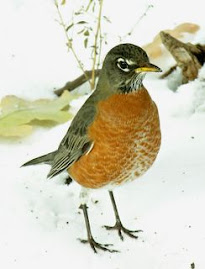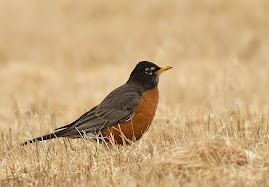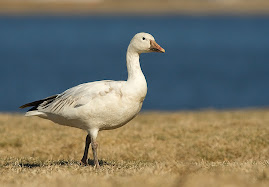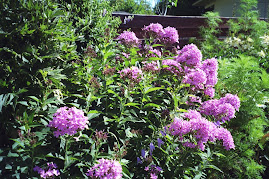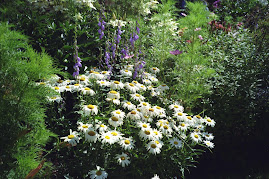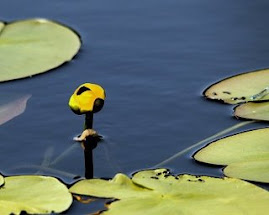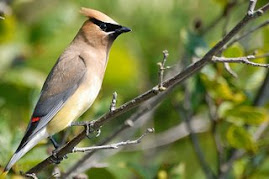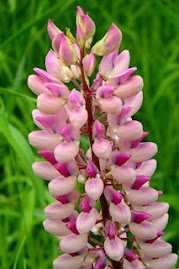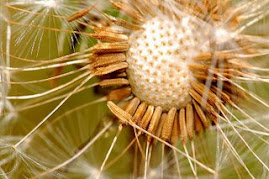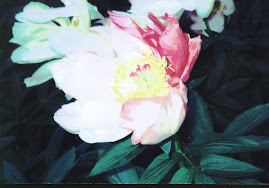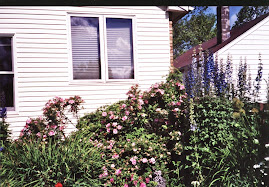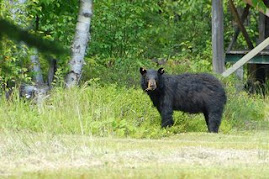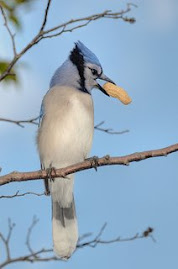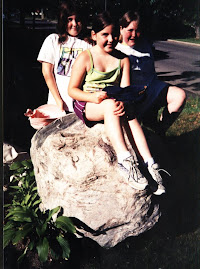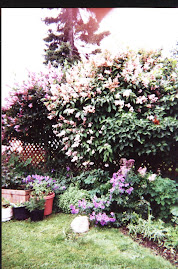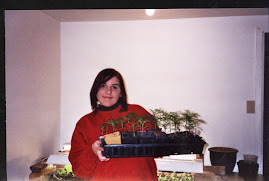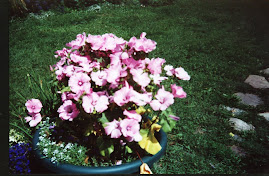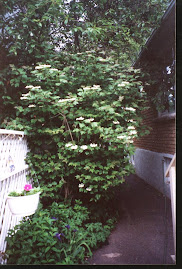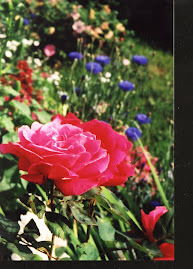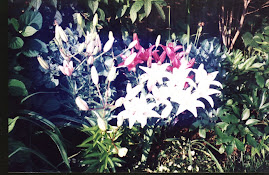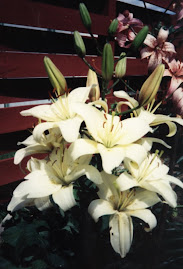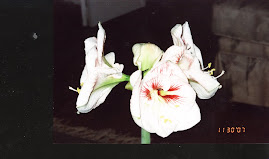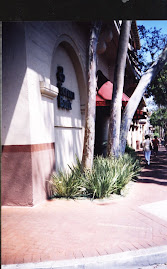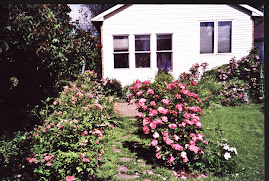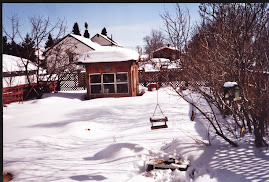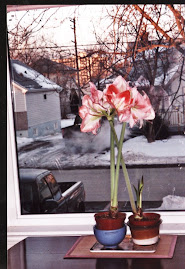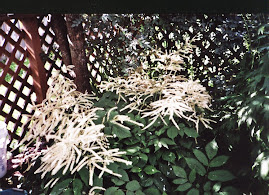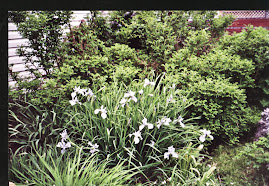The rain has caused every dormant seed in my soil to leap into life. Plants from the past have popped up, including white pansies I planted three years ago.
I usually get a few forget-me-nots here and there. I like them very much but I try to pull them before they go to seed. This year they are everywhere and have not only set seeds but a second crop of new plants is on the way. Fortunately they are easy to remove.
Lady’s mantle is dotted in every bed when formerly a bit of it grew in one back corner. It is a tall phlox like plant with a pretty mauve flower. It too is easy to remove before it sets seeds. The species clematis against the house has always produced more vines than the supports can carry.. This year they have over reached and moved into the roses as a first step to take over the world. Today I removed armloads of the soft viness with the lovely cup shaped mauve flowers.
Each section of the garden has its resident weeds. Plantain rules the sun garden. This is an interesting plant, originating in Europe, and called “the white man’s foot print” because it has spread all over the world with European travelers. It has medicinal properties. If you get a rash on your hands from stinging nettles or other plant, pick a handful of plantain leaves, crush them with your hands and rub the pulp on the skin. Will it work for poison ivy? I don’t know. But I remember on a canoe trip, walking in a field of ferns and getting a terrible red itch on my legs. Plantain cured it immediately.
Chickweed tries to take over the shed garden. The dandelions in the lawn are getting desperate. Having been chopped down by the mower several times, they are setting their flower heads lower and lower. Who says plants can’t think.
Grass has snuck into the fronds of the iris and into the arabis. It is easy to remove from the arabis because this spreading plant can be folded back and the grass exposed. However, it’s tough to get grass out of iris and the only sure way is to divide the plant.
Meanwhile, while I am fighting the weed battle, the peonies have started to bloom. The Siberian iris - the light blue “Sky Wings,”, the darker “Caesar’s Brother,” and the lovely mauve “Sparlin’ Rosie”- are all out in full fig. The hansa rose is bursting with flowers as is the red leafed rose. The latter has a spicy scent. The two large Preston lilacs are covered with flowers as is the white Mrs. Casmir Perrier, a double French.
Tip: Now is the time to buy perennials while they are on sale. Consider getting a few pots of lamium “Nancy White,” a variegated leafed plant that looks good along the edges of gardens in partial shade.
Showing posts with label weeds. Show all posts
Showing posts with label weeds. Show all posts
Wednesday, 2 July 2008
Monday, 19 May 2008
NOW IS THE HOUR
This is the time to thoroughly weed the garden. The soil is soft (not baked summer hard) and, if you weeded last October, weeds should be few. Of course, it is cold and wet out there so I use rubber gloves, not the cotton type.
But every gardener has to face a couple of unpleasant truths. . First, the more fertile your soil, the more abundant the weeds. If you spread manure or compost or fertilizer in your garden beds, your flowers thrive but the weeds also enjoy the pleasant accommodation. This fact alone could make one drop gardening to take up drinking.
Second, the root-spreading weeds have a nasty habit of breaking off at the soil line. This habit evolved in the wild so that the plant root could continue to grow even though the leaves were pulled by a deer or other plant eater. So you cannot yank out most weeds. You have to dig using some sort of long thin tool. I use an old screwdriver and also a special thin trowel.
The late, beloved gardener, Lois Hole, whose books give great advice to Thunder Bay gardeners, had a trick to keep down weeds. Whenever she finished working in one spot, she swept the side of the trowel across the top of the nearby soil, slicing away a thin layer. This discombobulates any tiny weeds that are just starting up.
But every gardener has to face a couple of unpleasant truths. . First, the more fertile your soil, the more abundant the weeds. If you spread manure or compost or fertilizer in your garden beds, your flowers thrive but the weeds also enjoy the pleasant accommodation. This fact alone could make one drop gardening to take up drinking.
Second, the root-spreading weeds have a nasty habit of breaking off at the soil line. This habit evolved in the wild so that the plant root could continue to grow even though the leaves were pulled by a deer or other plant eater. So you cannot yank out most weeds. You have to dig using some sort of long thin tool. I use an old screwdriver and also a special thin trowel.
The late, beloved gardener, Lois Hole, whose books give great advice to Thunder Bay gardeners, had a trick to keep down weeds. Whenever she finished working in one spot, she swept the side of the trowel across the top of the nearby soil, slicing away a thin layer. This discombobulates any tiny weeds that are just starting up.
Thursday, 3 April 2008
WILD FLOWERS TWO
The Wild Flower Garden – Two.
When I was growing up in the Port Arthur area, there were lots of wild flower gardens. They were called vacant lots. A lot of native species grew in these sunny grassy places: butter and eggs, black eyed susan, golden rod, yarrow, Joe Pye weed, mullein, pearly everlasting, various vetches and many others.
Of course there were also the travellers blown from near-by gardens. I remember finding a large rhubarb plant in one lot on Jean Street and in another, a lovely rose. Plants that we believe to be wild flowers but were introduced to the area long ago (example ox eye daisies) were abundant. We kids used to play in the long grass (today called “ornamental grass” in the seed catalogue) and found many small tiny flowers hiding there.
These vacant lots are all but gone and it is a treat to find one in town. I found a field of wild flowers on South Algoma Street two years ago, the site of the old Cornwall School. The native plants (and the introduced ones) had colonized the spot on their own and the number of birds was remarkable for such a small space. Native wild plants produce seeds acceptable to native wild birds. They also play host to native insects eaten by wild birds. Chipping and song sparrows sang on the day I walked though the area. I noted the plants were successfully breaking up the asphalt. “You go girls,” I said.
But alas. A letter to the newspaper demanded that these “weeds” be cut down. It is beyond my comprehension that a black eyed susan, sold in a local nursery, is a wild flower but when it grows wild it is a weed!
The city mowed the area to produce a field of stubble, for that is what you get when you mow wild grasses. It does not create turf. The song sparrow and the chipping sparrow decamped.
What I did not find in this vacant lot were the two “Toughies of Turf,” the dandelion and the plantain. These guys like mown lawn where they can spread their rosette of leaves, leaves so low the mower passes right over. Then, when no one is looking, they throw up a seed stalk and attempt to take over the world. They are very efficient plants. I believe that, in Thunder Bay, more money is spent on herbicides to attack dandelions and plantain than any other species of plant. Not only money but sweat and tears.
But the battle is pretty well over. The Ontario government, after hearing pleas from medical and environmental organizations, is planning to ban pesticides and that includes herbicides as well. Even after decades of war against the dandelion, the plant was never defeated and, after the ban on herbicides, its triumph is assured. So, Thunder Bay, time to get out grandma’s recipe book and learn how to make dandelion wine.
When I was growing up in the Port Arthur area, there were lots of wild flower gardens. They were called vacant lots. A lot of native species grew in these sunny grassy places: butter and eggs, black eyed susan, golden rod, yarrow, Joe Pye weed, mullein, pearly everlasting, various vetches and many others.
Of course there were also the travellers blown from near-by gardens. I remember finding a large rhubarb plant in one lot on Jean Street and in another, a lovely rose. Plants that we believe to be wild flowers but were introduced to the area long ago (example ox eye daisies) were abundant. We kids used to play in the long grass (today called “ornamental grass” in the seed catalogue) and found many small tiny flowers hiding there.
These vacant lots are all but gone and it is a treat to find one in town. I found a field of wild flowers on South Algoma Street two years ago, the site of the old Cornwall School. The native plants (and the introduced ones) had colonized the spot on their own and the number of birds was remarkable for such a small space. Native wild plants produce seeds acceptable to native wild birds. They also play host to native insects eaten by wild birds. Chipping and song sparrows sang on the day I walked though the area. I noted the plants were successfully breaking up the asphalt. “You go girls,” I said.
But alas. A letter to the newspaper demanded that these “weeds” be cut down. It is beyond my comprehension that a black eyed susan, sold in a local nursery, is a wild flower but when it grows wild it is a weed!
The city mowed the area to produce a field of stubble, for that is what you get when you mow wild grasses. It does not create turf. The song sparrow and the chipping sparrow decamped.
What I did not find in this vacant lot were the two “Toughies of Turf,” the dandelion and the plantain. These guys like mown lawn where they can spread their rosette of leaves, leaves so low the mower passes right over. Then, when no one is looking, they throw up a seed stalk and attempt to take over the world. They are very efficient plants. I believe that, in Thunder Bay, more money is spent on herbicides to attack dandelions and plantain than any other species of plant. Not only money but sweat and tears.
But the battle is pretty well over. The Ontario government, after hearing pleas from medical and environmental organizations, is planning to ban pesticides and that includes herbicides as well. Even after decades of war against the dandelion, the plant was never defeated and, after the ban on herbicides, its triumph is assured. So, Thunder Bay, time to get out grandma’s recipe book and learn how to make dandelion wine.
Subscribe to:
Posts (Atom)







